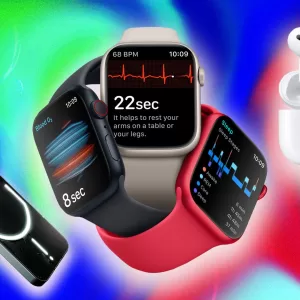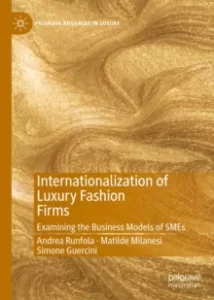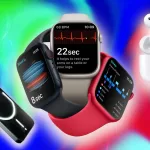
—
The Birth of High-End Audio
The Origins of High-End Audio
– **The concept of high-end audio**: Traces back to the early 20th century when radio technology first became widespread.
– **Initial developments**: Were primarily focused on functionality and widespread accessibility rather than sound fidelity.
– **Enhanced listening experience**: As technology progressed, a niche market for high-quality sound reproduction emerged.
Post-War Innovations and the Seed of Specialty Audio
– **Technological advancements**: Post-World War II, technological innovations led to improvements in sound recording and playback equipment.
– **The rise of stereo**: The introduction of stereo sound in the late 1950s provided a more immersive listening experience, fueling consumer interest in high-quality audio.
– **Growth of the audiophile community**: Enthusiasm for high-fidelity sound grew, creating a community of audiophiles seeking the best audio experience.
—
Further to my personal exploration and research as recounted in Phaidon’s “Hi-Fi: The History of High-End Audio Design”, design innovations and the quest for the ultimate audio experience has been a relentless pursuit. As an author, I recall the vivid images of the Apple co-founder, Steve Jobs, which spoke volumes about his penchant for detail and quality—not just in computing but also in the realm of high-fidelity audio.
My journey delved into the annals of audio history, beginning with the origins of high-end audio. A recognizable point in this history was the emerging disparity between mass-produced audio equipment designed for function and the specialty equipment crafted for the finest sound. Audiophiles, much like Jobs, sought to optimize every aspect of their listening experience.
With an intrigued audience in tow, the post-war era presented an audacious leap forward. Technological innovations post-WWII opened a panorama of possibilities in both sound recording and playback equipment. It was the period of the long-playing (LP) record and magnetic tape, each bringing a new dimension to the way music was experienced at home.
Stereo was the next revolution to make its mark. Going beyond the reach of mono recordings, stereo sound introduced depth, spacing, and an aural texture that was almost palpable. This leap forward was embraced by consumers, and thus nurtured the growth of high-end equipment designed to extract every nuance from stereo recordings.
The era saw the seed of specialty audio take root, marked by the birth of iconic turntables, amplifiers, and speakers. Fairchild, McIntosh, and Acoustic Research were among those at the vanguard, designing systems that catered to the discerning ears of a growing audiophile community. It was a community that valued not just the music, but the journey of sound from the musician’s instrument to the listener’s soul, unblemished by distortion or noise.
These developments laid a foundational ethos embraced by the progenitors of high-end audio: to manufacture not just devices for listening, but instruments that played the music as it was meant to be heard. This quest for acoustic excellence carried forward into the digital age, continually redefining the boundaries of sound clarity and authenticity.
The Apple co-founder’s collection, unseen by many, was emblematic of this heritage—a testament to the universal pursuit of excellence that bridged the gap between technology and artistry. My book seeks not only to recount the history of these developments but to enliven the narratives behind the systems that shaped the world of high-end audio.
The Golden Age of Hi-Fi
1950s: The Decade of Sound Technological Marvels
– **The Dawn of High-Fidelity**: The 1950s marked the beginning of the hi-fi era with the quest for sound perfection taking center stage.
– **Innovation in Components**: This decade saw the advent of stereo sound, the introduction of the LP, and improvements in turntables, amplifiers, and speakers.
– **Emphasis on Quality**: Audiophiles were on the rise, driven by the desire for sound reproduction that was as close to the original performance as possible.
– **Iconic Products Emerged**: Amplifiers like the McIntosh MC275 set the standard, and devices like the Garrard turntables became household names among enthusiasts.
Evolution of Home Audio Systems in the 1950s
– **From Mono to Stereo**: The transition from monophonic to stereophonic sound represented a significant leap, offering a more immersive listening experience.
– **The Rise of Turntables**: High-end turntables became a staple in audiophile households, with brands like Thorens and Linn making an impact.
– **The Importance of Speakers**: Manufacturers focused on producing speakers that offered an extended frequency range and higher fidelity.
– **Aesthetics and Design**: Hi-Fi equipment began to be designed not only for performance but also to serve as a statement of sophistication and style within the home.
Throughout the 1950s and beyond, hi-fi connoisseurs valued technical specifications and performance. The pursuit of the ultimate audio experience led to the creation of some of the most iconic and timeless pieces of audio equipment, many of which are still sought after by collectors and audiophiles today.
One interesting historical note is how these advancements in high-end audio design touched the lives of influential figures. The meticulous approach to sound quality famously extended into the lives of some of the most iconic business leaders and innovators. For instance, Gideon Schwartz in his book reveals a lesser-known facet of an Apple co-founder, showcasing his affinity for high-end audio equipment. This not only exemplifies the broad impact of the hi-fi movement but also highlights the intersection of technological innovation with personal passion for sound fidelity among the tech-savvy elite.
The trajectory of high-end audio design has always been propelled not just by technological advancements but also by a dedicated community of enthusiasts continually seeking the perfect sound. This ethos from the golden age of hi-fi resonates deeply even in contemporary design philosophies, influencing a wide array of audio products in the market today.
The Rise of Stereo and Component Systems
Stereo Sound Breakthrough and Its Early Adoption
As a witness and contributor to the world of hi-fi audio, I can recall the pivotal moment when stereo sound was first introduced. This breakthrough, which occurred in the mid-20th century, was more than just a technical novelty; it fundamentally changed the way listeners experienced music. Previously, monophonic sound was the standard, creating a single point of audio that offered limited spatial representation.
With stereo, suddenly there was a sense of depth and space. Instruments and vocals could be placed within a ‘sound stage’, giving a more lifelike rendition to the listener. This wasn’t just about width; stereo allowed for a three-dimensional illusion of live sound. Records started being produced in stereo, and the consumers began to appreciate the profound difference this made to their listening experience.
The early adoption of stereo was met with much enthusiasm, although it took some time for broadcasters and the wider industry to fully transform from mono to stereo. I was fortunate to see the evolution firsthand, as hi-fi enthusiasts quickly gravitated toward the new technology, eager to reconstruct the ambiance of concert halls and jazz clubs in their living rooms. The fervor with which audiophiles collected stereo vinyl and upgraded their systems was indicative of the significant cultural shift that was underway.
Component High-Fidelity Systems and Consumer Trends
Entering the hi-fi scene during its golden years, one could not help but notice the trend towards component systems. Rather than purchasing all-in-one units, discerning listeners preferred to curate their audio setups piece by piece. This allowed for greater customization and optimization of sound. Amplifiers, preamplifiers, tuners, turntables, and speakers could be selected based on preferred specifications and how well they worked together.
The 1950s and 1960s were a time when manufacturers produced components specifically to meet the demands of high-fidelity enthusiasts. Brands like Marantz, McIntosh, and JBL became synonymous with quality and were often the topic of discussion in various audio-focused publications and among audiophile circles.
Consumer trends also played a significant role in the evolution of hi-fi. As music became a more central part of cultural life, especially with the rise of rock n’ roll, the demand for high-quality audio increased. People were not only looking for equipment that performed well but also for units that fit into their home aesthetics. Hi-fi equipment was no longer just technical apparatus; it became part of the furniture, a lifestyle choice that spoke volumes about one’s taste and appreciation for the finer things in life.
It’s with this backdrop that I found myself deeply immersed in the nuances of hi-fi audio. The quest for the perfect sound was a journey many of us embarked on, leading to an ever-growing knowledge of the science of sound and a relentless pursuit of audio excellence. It was an era where fidelity and clarity became paramount in the listening experience, forever altering the landscape of home audio systems.
The Pinnacle of Analog: Turntables and Vinyl
The Art and Science of Turntable Design
As someone deeply fascinated by the intricate world of audio technology, I can attest that turntables are more than just devices to play vinyl records; they are a testament to the precision and engineering prowess of the golden age of high fidelity. The design of these machines marries elegance with mechanical sophistication, laboring under a simple yet challenging mandate: to recreate sound as authentically as possible.
– **Precision Engineering**: Every component of the turntable, from the needle to the platter, has been meticulously designed to minimize noise and distortion.
– **The Needle’s Journey**: The stylus, which traces the grooves of a vinyl record, is a marvel of geometrical accuracy, delicately balanced to extract the purest audio nuances.
– **Platter Balance**: The rotation of the platter must be uniform; any variance can lead to pitch errors known as ‘wow’ and ‘flutter,’ detracting from the listening experience.
– **The Tonearm Skating**: Consider the tonearm, which must be properly counterbalanced to avoid ‘skating’ across the record, where it might either rush through or drag against the grooves.
– **Isolation from Vibrations**: A key aspect is the turntable’s ability to isolate itself from external vibrations, as any interference would be directly transferred to the audio output.
Vinyl Records and the Culture of High Fidelity
Within my exploration of high-end audio design, I’ve observed that the resurgence of vinyl records isn’t merely a nostalgic trip; it’s a renaissance of high fidelity culture. The act of playing a vinyl record is almost ceremonious and attracts a community that appreciates the tactility and physical presence of their music.
– **The Tangible Experience**: Handling and caring for vinyl records instill a sense of interaction and ownership that digital formats struggle to emulate.
– **High Fidelity Sound**: Vinyl enthusiasts claim that records capture a warmer, richer sound due to their analog nature, which preserves the original audio waveforms.
– **Album Art and Liner Notes**: Vinyl offers a visual and textual dimension that enriches the entire musical experience with stunning album artwork and insightful liner notes.
– **Collectibility and Value**: Limited editions and rare pressings can become valuable collectibles, forging an entire subculture of collectors and traders.
My appreciation for the hi-fi culture is comprehensive, extending beyond the devices themselves to include the social and historical contexts in which they exist. Vinyl records are not just sound carriers; they are cultural artifacts that represent the enduring legacy of analog technology in a digital age. This is reflected in my burgeoning collection of vinyl and the continuous search for enhancements in playback quality, embodying the spirit of an audiophile persistently chasing sonic perfection.
Introduction of Digital Audio
Transition from Analog to Digital
In my quest to delve deeper into high-fidelity sound, the transition from analog to digital audio stands out as a momentous shift. While analog audio devices such as turntables had set a high benchmark for auditory perfection, the introduction of digital technologies brought about a new era in the history of sound reproduction.
– **Increased Convenience**: Digital audio ushered in unprecedented ease of use. Media like CDs and MP3 files allowed for more portable and robust means of listening to music.
– **Enhanced Durability**: Unlike vinyl records, digital formats weren’t susceptible to wear from physical contact, ensuring the longevity of the recording’s quality.
– **Precision of Sound**: Digital recording and playback offered a more exact replication of sound without the mechanical limitations that sometimes affected analog devices.
– **Storage and Accessibility**: The amount of music that could be stored digitally was orders of magnitude greater than what could be kept on physical media, making vast libraries accessible in the palm of one’s hand.
Compact Discs and the Digital Audio Revolution
The advent of the Compact Disc (CD) was a defining milestone in my journey through audio technology. Compact Discs represented both innovation in audio quality and a revolution in how music was consumed.
– **Crystal Clear Sound**: CDs provided a noise-free listening experience, free from the pops and hisses associated with vinyl records.
– **Random Access Playback**: The ability to instantly skip to any track on a CD was a significant evolution from the linear listening format of records and tapes.
– **Digital Encoding**: The use of Pulse Code Modulation (PCM) to encode audio onto CDs enabled a previously unheard-of fidelity in sound reproduction.
– **Mainstream Adoption**: The CD rapidly became the format of choice for both consumers and the music industry, further propagating the digital audio revolution.
As someone who witnessed and participated in this transition, I have seen first-hand how digital technology has transformed the landscape of audio design. Digital audio allowed for advancements in sound engineering that would have otherwise been impossible with analog alone. However, despite the benefits, many audiophiles like me continued to cherish the irreplaceable character and richness of analog sound, which is why vinyl records have maintained their allure even in the digital age. It signifies the complex relationship humans have with technology—always moving forward, yet with a deep respect for the nuanced artistry of the past.
The Resurgence of Analog and Vinyl
The Analog Renaissance in the Modern Age
Witnessing the resurgence of analog audio in the current digital era is intriguing. Despite living in a time dominated by streaming services and instant access to millions of songs, there’s a strong and growing affinity towards analog mediums, specifically vinyl records. In my experiential observations:
– **Quality Over Convenience**: The choice for many to revert to analog seems to stem from a desire for quality and authenticity over convenience. The warmth and fullness of sound that vinyl provides are unmatched by the compressed audio files of today.
– **The Sentimentality Factor**: For some, myself included, this revival is personally resonant; it’s evocative of a time when music was an art not just consumed, but savored.
– **Embracing Imperfection**: Part of the analog allure comes from its imperfections. The pops and crackles that one might hear in a vinyl playback are often embraced as intrinsic elements of the listening experience, much like the appreciation of grain in film photography.
Vinyl’s Comeback amidst Digital Domination
Vinyl’s comeback amid the prevalence of digital music services is a testament to its enduring allure. The reasons for this resurgence are manifold and close to my heart:
– **A Physical Connection**: Digital files cannot mimic the physical connection and ritual of playing a vinyl record; the act of flipping through a collection, selecting a record, and placing the needle is a tactile experience that reinforces the bond between the listener and the music.
– **Superior Sound**: Many audiophiles argue that the uncompressed audio on vinyl records results in superior sound quality. As an audiophile, I’ve experienced this firsthand, noticing a fuller and more dynamic range of sound on vinyl.
– **Niche Market Growth**: The market for vinyl has grown consistently, leading to an increase in the production of new turntables, cartridges, and other related audio equipment. It’s clear that manufacturers and consumers alike are recognizing the unique value that vinyl brings to music listening.
– **Supporting Artists**: The vinyl market often provides more support to artists, who receive a larger share of revenue from vinyl sales compared to streaming. I take pride in knowing that my purchases contribute directly to the musicians and creators.
The vinyl revival is much more than just a trend; it is an ongoing movement demonstrating a collective desire for a more engaging and high-quality listening experience. It signifies a profound appreciation for the richness of sound and the physical tangibility of music that many, including myself, believe was lost in the transition to digital. The world of high-end audio design and vinyl records remains an expansive and endlessly fascinating pursuit, one that continually seeks the perfect marriage of form and function to enchant the ears of listeners around the globe.
The Advancement of Speaker Technology
Breakthroughs in Speaker Design and Performance
The field of speaker technology has witnessed remarkable advancements, which I have observed closely as an audiophile and enthusiast. Speaker design has continually evolved to deliver enhanced audio experiences, departing significantly from early audio equipment. Here are some key developments:
– **Material Innovation**: I have seen manufacturers experiment with a range of new materials, such as Kevlar and carbon fiber, aimed at improving sound quality while reducing resonance and distortion.
– **Digital Signal Processing (DSP)**: The integration of DSP technology in speakers has been nothing short of transformative, allowing for greater control over sound reproduction, from correcting the acoustics of the room to tuning the speakers to personal preferences.
– **Wireless Connectivity**: The advent of wireless technology in speakers, including Bluetooth and Wi-Fi, is a convenience I greatly appreciate, allowing seamless integration into modern smart homes, free from the clutter of cables.
Coaxial Drivers and the Quest for Pure Sound
In my pursuit of audio perfection, coaxial drivers have become a point of fascination for their unique design and contribution to sound clarity. Here are some insights I’ve garnered:
– **Point Source Acoustics**: Coaxial drivers deliver both high and low frequencies from a single point, which, through my personal experience, results in a more natural and coherent soundstage that meticulously reproduces the intentions of the audio engineer.
– **Phase Alignment**: Traditional speaker setups can suffer from phase issues due to multiple drivers spread out over a surface. Coaxial drivers effectively address this, offering phase alignment that enhances the precision of the audio image.
– **Placement Versatility**: In my home setup, I’ve found that speakers with coaxial drivers are less fussy about placement, making them a versatile choice for various room sizes and shapes.
From witnessing the rise of turntables and vinyl in a digital age to experiencing the revolutionary changes in speaker technology, I’ve gained a profound respect and understanding of the intricate dance between technology and music. As I continue to explore the sonic landscape, these innovations solidify my belief in the power of sound to transform spaces and elevate moments with unparalleled fidelity.
Hi-Fi in the 21st Century
Hi-Fi Today: Blending Classic Analog and Cutting-Edge Digital
The realm of high-fidelity audio has certainly witnessed a transformation since its inception, especially with the continual integration of advanced technologies. While I’ve marveled at the vinyl revival, the evolution of Hi-Fi in the modern age ventures beyond mere nostalgia. I’ve observed the following trends and realities:
– **Hybrid Systems on the Rise**: Nowadays, it’s not uncommon to see audiophiles combining the old with the new—vintage turntables connected to state-of-the-art digital-to-analog converters (DACs) and amplifiers. The result is a sound system that honors tradition while taking advantage of digital clarity and precision.
– **High-Resolution Audio Streams**: As someone who values sound quality, I am encouraged by the push towards high-resolution streaming services. Music lovers can now enjoy digital convenience without significantly compromising on audio quality, thanks to platforms offering FLAC and other lossless formats.
– **Technological Innovations**: Innovations such as room correction software and advanced acoustic material enhancements are drastically improving sound quality. Speakers and amplifiers are also becoming smarter, equipped with the ability to adapt to a room’s specific acoustic profile.
– **virtual reality and Spatial Audio**: Experiencing music in immersive soundscapes has become a possibility with virtual reality (VR) and spatial audio technologies. These innovations aim to redefine the traditional stereo setup by providing depth and a three-dimensional sound that encapsulates the listener.
The Future Trajectory of High-End Audio Systems
The trajectory of high-end audio systems is steering towards a more personalized and immersive listening experience. My insights on where Hi-Fi is headed include:
– **Personalization Is Key**: The future of Hi-Fi will likely involve systems that can be tailored to individual listening preferences, whether that be through adjustable acoustic settings or through AI that learns and adapts to one’s taste in sound.
– **Wireless and High-Fidelity**: The proliferation of high-fidelity wireless audio has begun to take hold. With the advancement of Bluetooth codecs and Wi-Fi audio streaming, the promise of high-quality wireless sound is becoming a reality.
– **Sustainability in Design**: An emerging aspect I’ve recognized in high-end audio design is sustainability. As environmental concerns become more prominent, I expect future audio equipment to incorporate eco-friendly materials and production processes.
– **Growth of the Headphone Market**: The luxury headphone arena is expanding. With companies rolling out headphones that claim to offer studio-grade quality, listeners can indulge in high-fidelity sound on a personal scale. It becomes more about the journey of sound than the destination.
In my experiences with audio design and technology, I’ve noticed that true high-fidelity sound is not just about the equipment; it’s about how the equipment enhances the relationship between the listener and the music. As we forge ahead, I will be keeping an eager ear out for the innovative ways in which high-end audio will continue to develop, catering to both the discerning audiophiles and those new to the wonders of Hi-Fi sound.
Reflection and Impact
The Cultural Significance of High-End Audio
Throughout my career, I have observed the profound influence high-end audio has had on our cultural landscape. It goes beyond just a penchant for quality sound; it represents a dedication to the art of music itself. Here’s what I’ve noticed:
– **Elevation of Music as an Art Form**: High-end audio systems have contributed to the elevation of music listening to an art form. The attention to detail in sound reproduction emphasizes the artistic nuances embedded in recordings.
– **Preservation and Respect for Artists’ Work**: The fidelity of sound achieved through high-end systems allows listeners to experience music as close to the artists’ original intent as possible, fostering a deeper respect for the artists’ craft.
– **Communal Listening Experiences**: Despite our individualized society, Hi-Fi has the power to bring people together for communal listening sessions. Audiophile gatherings and listening parties celebrate our collective appreciation for superbly reproduced sound.
– **Educational Value**: High-end audio equipment can serve as an educational tool, demonstrating the difference that quality sound makes and training ears to discern subtle details in music.
How High-End Audio Has Influenced Listening Habits and Music Enjoyment
The presence of high-end audio has undoubtedly shaped how we consume and enjoy music. In reflecting on this impact, the following points stand out:
– **Increased Quality Expectation**: As a listener, I’ve noticed that exposure to high-end systems often leads to an increased expectation for sound quality, even in everyday listening environments.
– **Critical Listening Skills**: The nuances that high-fidelity systems reveal encourage listeners to develop critical listening skills, further enhancing their appreciation for music complexity and production.
– **Active Listening**: With Hi-Fi, listening is not just a passive activity. Enthusiasts are more likely to actively engage with music, focusing on the auditory experience without distractions.
– **Music as an Experience**: High-end audio has transformed music listening from a background activity into a full-on experience. It’s about setting aside time to be immersed in sound, much like one would with a movie or a book.
– **Validity of Personal Preference**: Lastly, high-end audio has instilled the idea that personal preference in music consumption is valid and important. Whether one prefers vinyl’s warmth or the pristine clarity of digital formats, Hi-Fi respects and caters to these preferences.
As an observer and participant in the evolution of high-end audio, I see its impact as twofold: on the technology front, it drives innovation and on the cultural front, it reinforces music’s status as a significant art form and enriches our listening practices. High-end audio is not simply about passive consumption; it is an active celebration of sound.
















